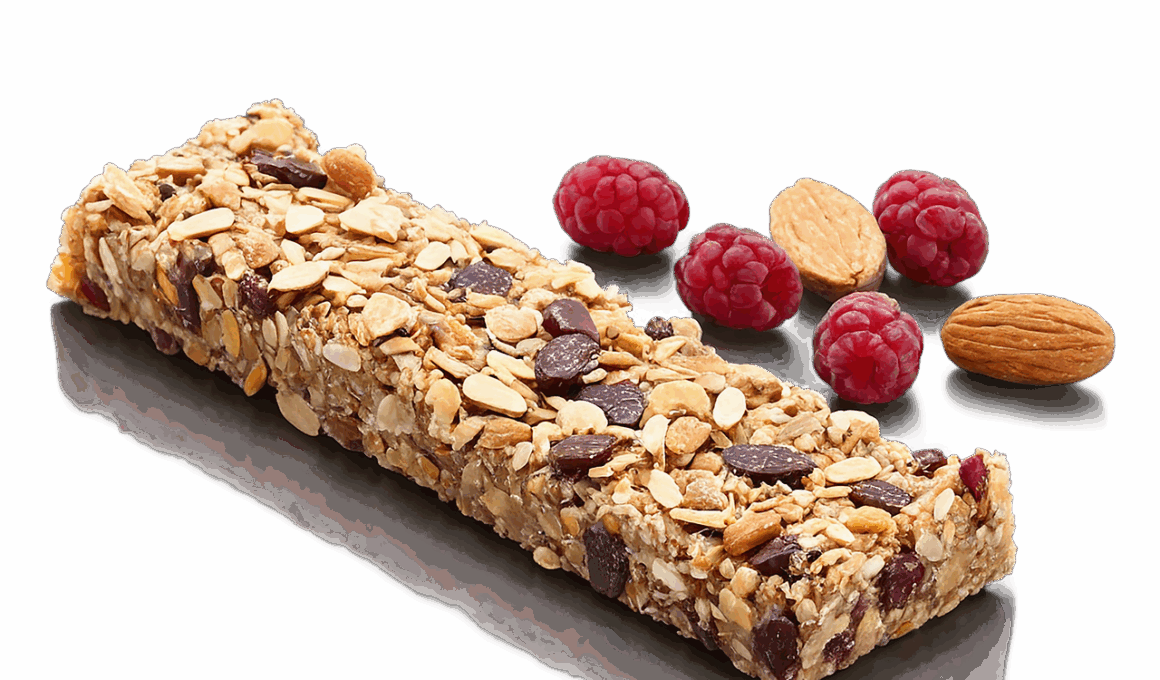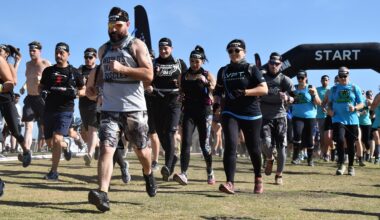Timing Your Energy Bar Intake for Maximum Workout Efficiency
Energy bars have become a staple for athletes and fitness enthusiasts seeking quick and convenient nutrition. However, understanding when to consume these bars can significantly enhance workout efficiency. Studies suggest that timing energy bar intake around your workout can optimize performance and recovery. Ideally, these bars contain a mix of carbohydrates, proteins, and fats, providing the right energy balance. Consuming an energy bar one hour before an intense workout helps to fuel your body effectively. This timing ensures that your body has time to digest and convert nutrients into usable energy. If you eat your energy bar too close to your workout, it may lead to discomfort or sluggishness. On the other hand, consuming your energy bar post-workout supports muscle recovery. The nutrients in the energy bar begin repairing muscle tissues and replenishing glycogen stores depleted during exercise. Moreover, selecting energy bars with high protein can further enhance this recovery phase. Thus, incorporating strategic timing into your energy bar consumption can make a profound impact on your exercise routines and overall performance.
Understanding the specific nutrients in your energy bar is essential for optimal usage. A good energy bar should provide a balance of carbohydrates for fuel, proteins for muscle repair, and healthy fats for sustained energy. Pay close attention to the ingredient label; aim for bars with natural ingredients. Bars containing added sugars can lead to energy spikes followed by crashes, hindering performance. Look for bars that feature ingredients like oats, nuts, and seeds, as they provide more holistic nutrition. Furthermore, consider your workout intensity when choosing your energy bar. For low to moderate intensity workouts, a bar with about 20-30 grams of carbohydrates and 5-10 grams of protein will suffice. Conversely, more intense, prolonged activities may require a bar with higher carbohydrates to replenish energy stores. Also, check the fiber content; too much fiber before a workout can cause digestive issues. Ultimately, the best energy bar is one that aligns with your personal nutritional needs and workout goals. Thus, carefully select your energy bars to maximize both your fitness performance and health objectives.
Pre-Workout Energy Bars
Pre-workout is a crucial time for fueling your body, making energy bars a smart choice. Consuming an energy bar about 30 to 60 minutes before exercising allows for optimal nutrient absorption. At this stage, you want a bar rich in carbohydrates to provide immediate energy. The ideal pre-workout energy bar would also contain some protein to enhance endurance. For optimal results, choose bars that have a low glycemic index number to prevent rapid spikes in blood sugar levels. Furthermore, avoid bars that are high in fat or fiber in this timeframe, which may slow digestion. Consuming a bar with simple carbohydrates, like honey or glucose, provides a quick energy source when needed. Additionally, hydration should not be overlooked; drink water while consuming your energy bar to prepare your body for exercise. Pre-workout bars should ultimately complement a well-thought-out nutrition strategy. Remember, your unique needs will vary based on workout duration and intensity, so you might need to adjust your bar selection accordingly. Properly timing your energy bar intake can lead to enhanced performance.
Among the essential strategies for using energy bars effectively is understanding post-workout nutrition. After a rigorous workout, your body craves replenishment, making the post-workout bar consumption even more important than pre-workout. Ideally, consume an energy bar within 30 minutes to two hours after concluding your workout session. This window is often referred to as the “anabolic window,” a time when your muscles are primed for recovery. Focus on consuming bars that have a higher protein content—approximately 10 to 20 grams—to support muscle repair. Additionally, having the right mix of carbohydrates in post-workout bars assists in glycogen replenishment, ensuring your energy stores are restored. Opt for bars containing natural ingredients like whey protein or nuts, which can provide the necessary nutrients post-exercise. Furthermore, you want to ensure your post-workout nutrition is balanced; don’t rely solely on bars. Pair them with additional sources of nutrition such as fruit or a smoothie for optimal recovery. By fine-tuning your post-workout energy bar intake, you can significantly aid your body’s recovery process and better prepare for future workouts.
Experimentation with Timing
A crucial aspect of timing your energy bar consumption is personal experimentation. Everyone’s body responds differently to nutrition timing, so you must listen to your body and adjust accordingly. Monitor how your body reacts to different bars consumed at various times—before, during, and after workouts. Track performance, energy levels, and recovery rates associated with each strategy. This can help you identify what works best for you, enhancing your workout efficiency. Utilize a workout journal to document these factors, helping you pinpoint effective energy bar strategies tailored to your needs. Additionally, it’s essential to remain consistent with your timing approach. Attempting multiple methods in a short period may complicate results. Give each strategy enough time to observe its effects. Moreover, if you are training for an event or competition, focus on perfecting your energy bar timing well in advance to avoid surprises on the big day. Experimenting intelligently can lead to profound improvements in your workout efficiency and overall athletic performance.
It’s essential to consider the psychological aspects of energy bar consumption as well. Many athletes find motivation in the ritual of eating their energy bars, which can create a positive mental association with workouts. This psychological edge can stimulate drive and focus during exercise sessions. Similarly, developing a routine can aid in preparing both your body and mind for workouts. Customizing your energy bar intake can foster a sense of agency over your nutrition, leading to improved performance. Discuss energy bar preferences with fellow athletes and fitness enthusiasts; shared insights can provide valuable information about effective timing and choices. Networking in the fitness community can also enhance your overall experience, keeping you motivated towards your fitness goals. Moreover, keep in mind how your energy bar choice impacts your overall diet. Each bar taken should complement a balanced nutrition plan rather than replace healthy meals. Therefore, finding energy bars that suit your taste buds while providing the necessary nutrients is vital for long-term adherence. Balancing the psychological aspects with well-timed nutrition can boost motivation and efficiency.
Final Thoughts on Energy Bar Timing
In summary, timing your energy bar intake can significantly impact your workout efficiency and overall fitness journey. Whether consumed pre-workout for immediate energy or post-workout for recovery, understanding when to consume these bars fosters better nutrition strategies. Key considerations, such as bar composition, carbohydrate to protein ratios, and individual response, will help you reap the full benefits of energy bars. Don’t underestimate the power of nourishment timing; correct choices can enhance your athletic performance and recovery dramatically. Remember to leverage personal experimentation and maintain a balanced diet overall. Seek inspiration from your fitness community and be open to trying new bars and strategies. Ultimately, the goal is to create a routine that supports your long-term fitness and nutritional objectives. With careful planning and awareness, you can optimize your energy bar consumption for maximum workout efficiency. Be sure to stay hydrated alongside your nutritional choices to maximize absorption and performance. Approaching your energy bar intake thoughtfully will benefit not just your workouts, but your entire fitness lifestyle.
By integrating these techniques, you position yourself for heightened potential and performance in every workout session. Consistent application of successful strategies leads to long-lasting benefits.


